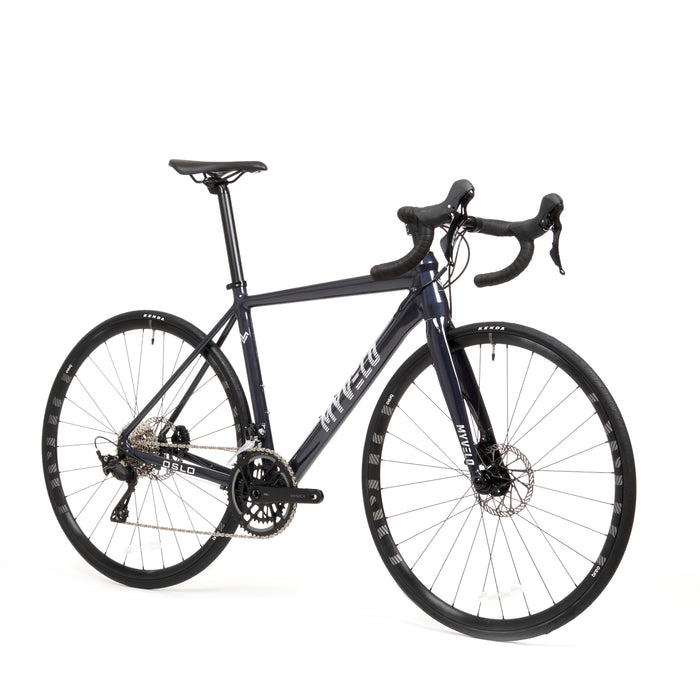
Oslo Endurance Road Bike
incl. FREE shipping & free returns

If you regularly ride your road bike, you'll know the feeling: Your legs feel heavy at first, your heart rate races too fast, and your performance falls short of your expectations. A structured warm-up can change exactly that – and much more. Read here to learn why a thorough warm-up on your road bike is a good idea, how it works, and what mistakes you should avoid.
Von Helena Burgardt |
2 minutes read time

During your warm-up, you gradually increase your heart rate and blood flow to your muscles. This improves the oxygen supply to your muscles and boosts your metabolism, making you more efficient and feeling more alert.
Starting off cold and exercising at too high an intensity can lead to strains, overexertion, or even cardiovascular problems. A slow start protects joints, tendons, and muscles — especially during the colder seasons.
A good warm-up isn't just physically important. It also helps you prepare mentally for your ride or training: Go through the route in your head, find focus, and perhaps incorporate some technical exercises. You'll start off more focused and aware.
A warm-up should last at least 10–20 minutes, depending on the outside temperature, training goal, and individual fitness level. A sensible structure might look like this:
Start with a light cadence (90–100 rpm) on flat terrain. Choose an easy gear so you're barely exerting any pressure on the pedals. Keep your heart rate low (60–70% of your maximum heart rate).
Gradually increase the pace and resistance. Include two to three short intervals of 30 to 60 seconds each, increasing the intensity slightly without going into the anaerobic zone. Continue pedaling easily between intervals.
Optionally, you can also improve your pedaling or cornering technique during the warm-up. For example, focus on a smooth pedal stroke or consistent power application. A breathing exercise can also help you find the right rhythm.
The harder your training becomes, the longer and more structured your warm-up should be. The goal is to optimally prepare your body for high levels of exertion so that you don't "burst" during the first intervals.
A warm-up is mandatory before a race. Many pros spend 20–30 minutes on the roller to maintain a consistent warm-up, regardless of the weather. The final few minutes often involve targeted increases to race pace.
🚫 Too short or omitted altogether
Many road cyclists set off at high speed right from their front door – especially on group rides. This can be counterproductive and leads to slow starts.
🚫 Too intense, too early
A warm-up should be challenging, but not exhausting. If you feel exhausted after the warm-up, it's been too much. Give your body time to get going.
🚫 No transition to the main load
Avoid abrupt transitions. Build a smooth transition from warm-up to training or racing, for example, with a short "cruising" phase.
A thorough warm-up on your road bike isn't a luxury , but a fundamental part of every tour, every training session, and every race. It not only improves your performance but also protects your health.
So: Take your time! Your body will thank you – with better legs, a clearer mind, and a lower risk of injury. 🚴💨